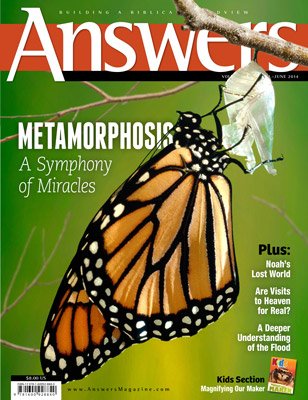The Right Tool for the Job
Apologetics
Trying to convince someone about the Creator but unsure which resource is most effective? There’s one tool you might be overlooking. In fact, it’s essential for all apologetics.
Showing people examples of the design in nature can be a helpful resource in your apologetics toolbox—but it can’t be your only tool. Romans 1:18–23 teaches that God’s eternal power and divine nature are clearly seen in the things that He has created, but just knowing that God is Creator is not sufficient to bring one to salvation.
We can be sure that everyone in heaven believes God—Father, Son, and Holy Spirit—created the universe. We can also be sure that many in hell went there also believing in a creator.
One of the major dangers of the modern Intelligent Design movement is the absence of references to the Creator—Jesus Christ (John 1:1–3). Their writings speak of a designer, but they leave it up to you to determine the creator’s identity. Mormons, Roman Catholics, Protestants, Muslims, and other theistic religions can all endorse the ID movement and its arguments.
On top of that, many scientists in the ID movement actually embrace the big bang, millions of years, and evolutionary processes. If you hand out one of their books or DVDs that teach design, the arguments may rely on the big bang or geological or biological evolution. So if you choose to use resources like this in your apologetics conversations, be prepared and intentional about follow-up, and add more than scientific arguments.
More than knowing that God is the Creator, people need to trust Him as Savior. We must be clear and purposeful on this point. One good approach is to open the Bible to Colossians 1:9–23 after the person finishes watching a nature video on metamorphosis, cellular complexity, or the uniqueness of earth. Show them Jesus the Creator in verses 15–18. Tell them how you were once in the kingdom of darkness but are now an adopted son or daughter described in verses 9–14. Verses 21–23 explain how they are alienated from their Creator because of their sin but they can be reconciled to Him through the death of Christ. Then lovingly call them to repent and trust in the Lord Jesus, the only person who can save them from their sin.
Believing that it’s impossible to change a caterpillar into a butterfly by blind chance cannot save a soul, but pointing them to Christ’s power to transform them from death to life can. We need to keep Jesus Christ, the Creator and Savior, at the forefront of our apologetics (1 Peter 3:13–18).
Answers Magazine
April – June 2014
A closer look at the Genesis Flood account reveals a beautifully written, unified narrative that points to one inspired author. The passage masterfully highlights one central message: “God remembered Noah.” Along with in-depth articles on the Flood, this issue shows biblical and historical evidences of Christ’s Resurrection, new discoveries about the miracle of a butterfly’s metamorphosis and much more!
Browse IssueRecommended Resources

Answers in Genesis is an apologetics ministry, dedicated to helping Christians defend their faith and proclaim the good news of Jesus Christ.
- Customer Service 800.778.3390
- Available Monday–Friday | 9 AM–5 PM ET
- © 2025 Answers in Genesis




